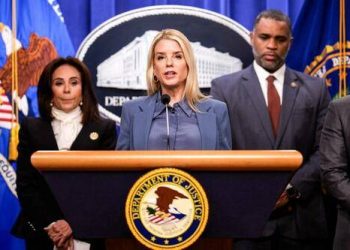Even years after the official end of the COVID-19 pandemic, certain behaviors and practices lingering from its early days continue to surface, puzzling many observers. Recently, political commentator Libs of TikTok shared a video showcasing what has been described as “COVID cautious” bowling, a new example of pandemic-induced hyper-vigilance.
“A group of ‘COVID cautious’ people in Oregon rented out a bowling alley, had everyone mask up, including the employees, set up air purifiers, and separated kids from adults,” the tweet accompanying the video read. The poster added incredulously, “How are these people real?”
A group of “Covid cautious” people In Oregon rented out a bowling alley, had everyone mask including the employees, set up air purifiers, and separated kids from adults.
— Libs of TikTok (@libsoftiktok) December 26, 2024
This happened a few days ago.
How are these people real pic.twitter.com/9219aWEKSn
The video features a narrator, identified as Amanda, explaining the lengths to which her group went for their event at Kingpins, a Portland bowling alley. She recounts that her group of 80 people rented out the facility before business hours and adhered strictly to masking policies, bolstering the air circulation with an extensive array of purifiers.
“We had purifiers up the a**,” Amanda quipped, reflecting on the measures taken. Nevertheless, she enthusiastically described the experience as “a fantastic time” and “amazing,” highlighting that both adults and children participated in the outing.
Though such caution may have been understandable at the height of the pandemic, many find it bewildering that the event took place recently. Critics argue that such behaviors exemplify the lingering psychological effects of years of fear-based messaging from institutions like the CDC and the World Health Organization.
This display raises broader questions about how certain segments of society view and mitigate risks in everyday life. While safety measures are a fundamental part of living responsibly, some see this kind of hyper-vigilance as veering into paranoia.
One might wonder, if this is how the “COVID cautious” approach recreational activities like bowling, what about more routine tasks like grocery shopping or visiting family?
This phenomenon speaks to a larger cultural shift. Activists and hyper-vigilant individuals may appear to cling to practices or causes to find meaning or purpose, critics suggest. Whether pandemic precautions, debates surrounding identity, or other ideologies, some see these behaviors as fulfilling a perceived need for significance.
As Amanda and her group continue bowling under stringent restrictions, the broader public grapples with a lingering question: At what point does reasonable caution give way to unnecessary fear?
 Telegram is where we really talk. Don't miss out!
Telegram is where we really talk. Don't miss out!









